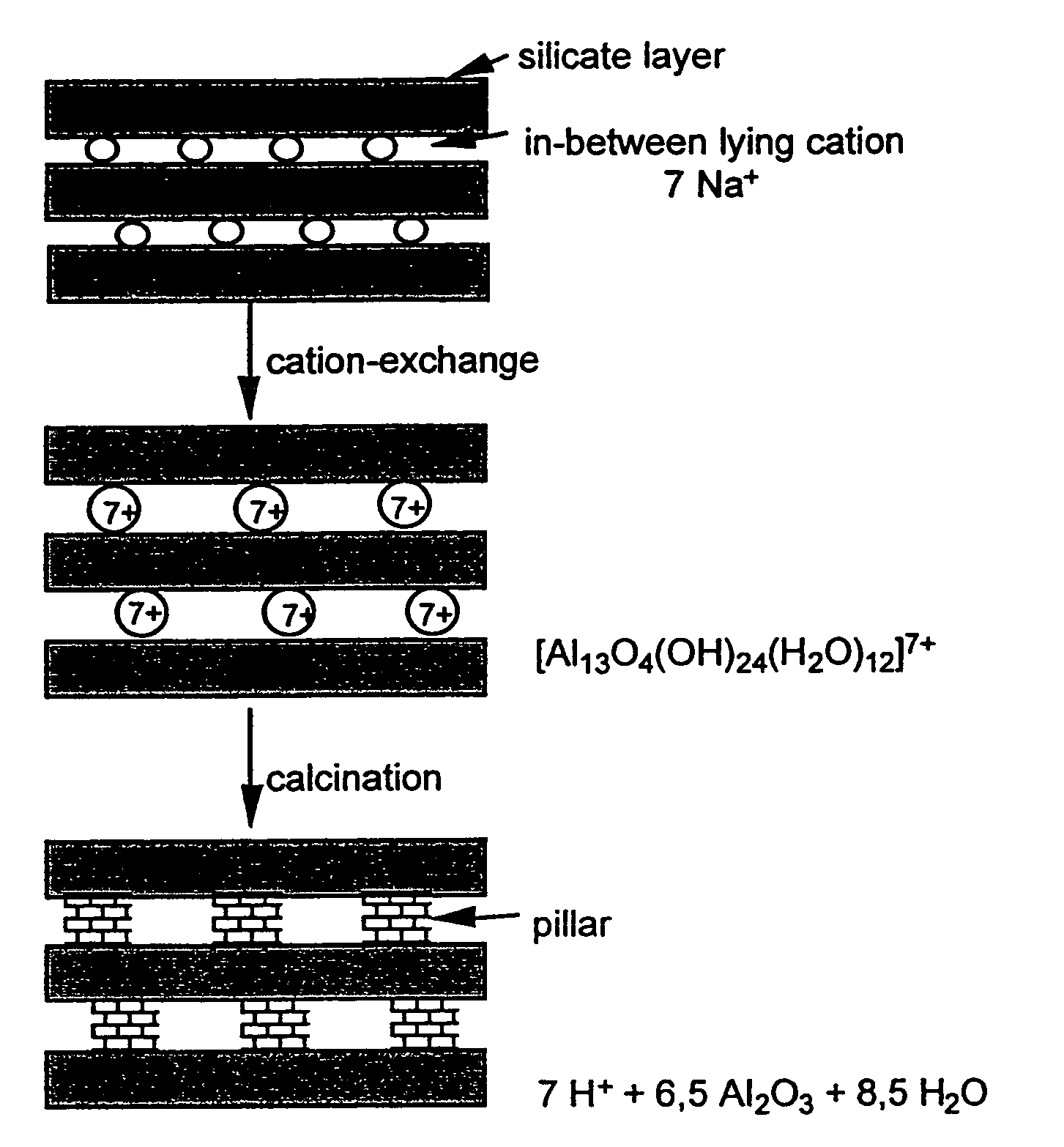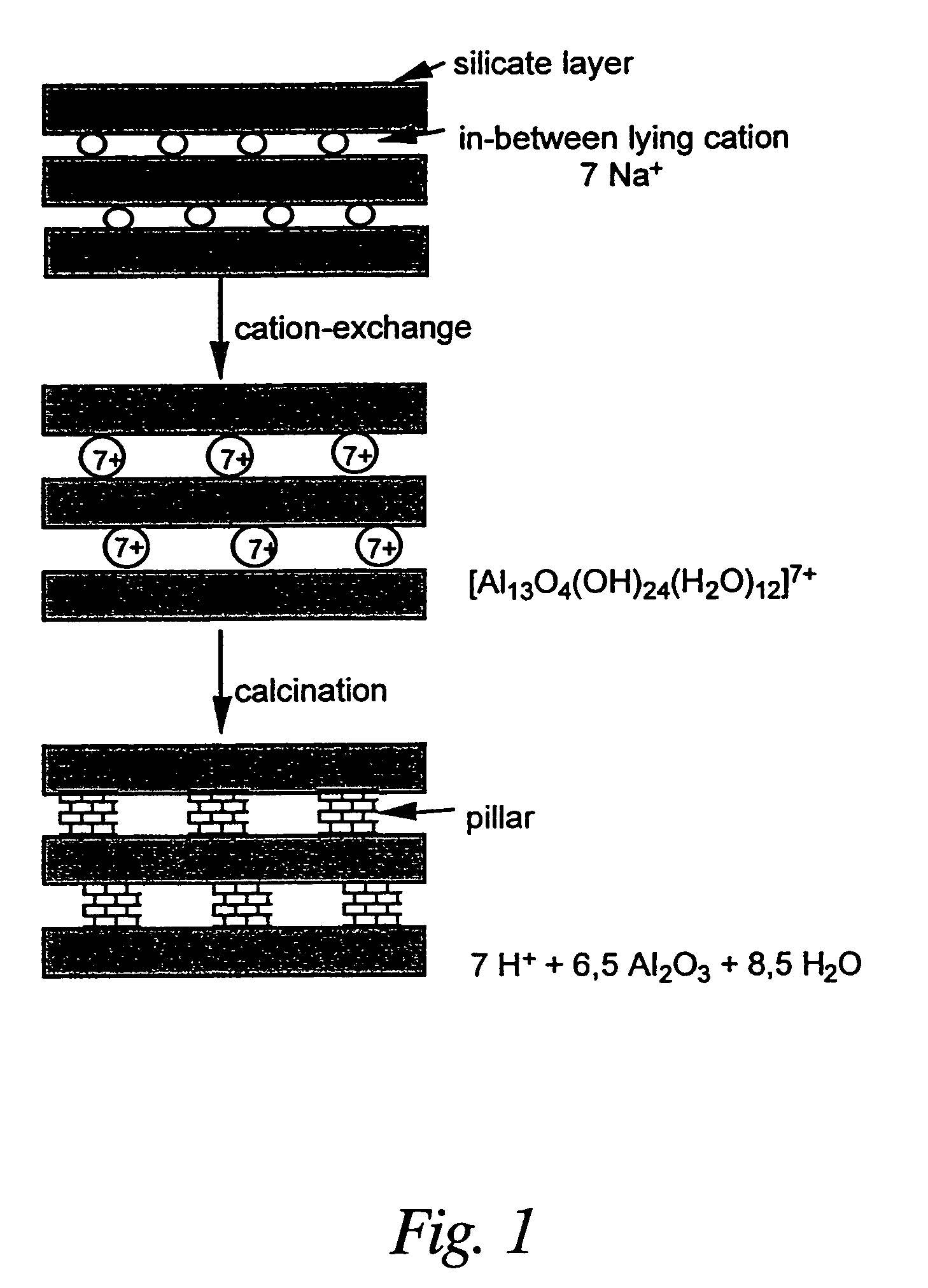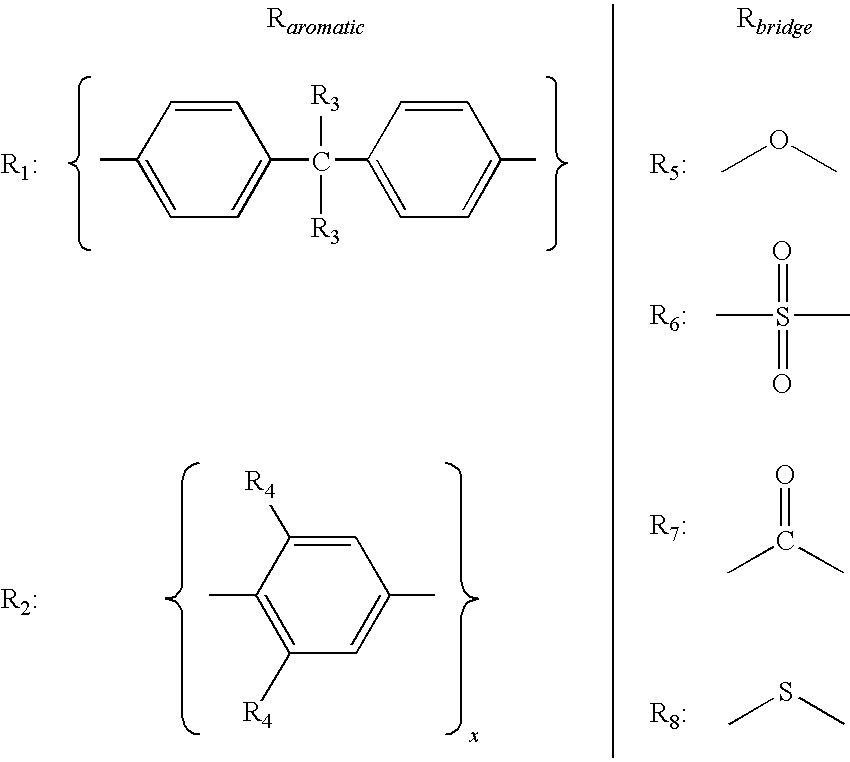Composites and composite membranes
a composite membrane and composite membrane technology, applied in the direction of organic compounds/hydrides/coordination complex catalysts, fluid actuated brakes, conductive materials, etc., can solve the problems of membrane loss of water network above 100° c., rapid decrease of proton conductivity at temperatures above 100° c., and dry up, etc., to achieve usable at application temperatures of up to 100°
- Summary
- Abstract
- Description
- Claims
- Application Information
AI Technical Summary
Benefits of technology
Problems solved by technology
Method used
Image
Examples
examples
[0078]1. Sulfonated polyetheretherketone (sulfonation degree 70%) is dissolved with 5 weight % of montmorillonite in DMAc and knife-coated to a membrane of 50 μm thickness after evaporation of the solvent. This membrane is put into an aqueous medium contaminated with fungi. No attack by fungi is identified. The blank without montmorillonite is heavily colonized and attacked.
[0079]2. a) Sulfonated polysulfone in salt form and polyvinylpyridine is blended in such a ratio that the final capacity is 1 milli equivalent [H+] per gram of the total blend. Both polymers are dissolved in DMAc and processed to a membrane. The specific resistance of this membrane is 33 ohm·cm.
[0080]b) To an identical blend as in 2a, additionally 8 weight % of activated montmorillonite is added, and the blend obtained is processed to a membrane as in 2a. The specific resistance is 27.7 ohm·cm.
[0081]3. Polybenzimidazole dissolved in DMAc is mixed with 10 weight % of activated montmorillonite and as a blank withou...
PUM
| Property | Measurement | Unit |
|---|---|---|
| temperature | aaaaa | aaaaa |
| Temperatures | aaaaa | aaaaa |
| pressure | aaaaa | aaaaa |
Abstract
Description
Claims
Application Information
 Login to View More
Login to View More - R&D
- Intellectual Property
- Life Sciences
- Materials
- Tech Scout
- Unparalleled Data Quality
- Higher Quality Content
- 60% Fewer Hallucinations
Browse by: Latest US Patents, China's latest patents, Technical Efficacy Thesaurus, Application Domain, Technology Topic, Popular Technical Reports.
© 2025 PatSnap. All rights reserved.Legal|Privacy policy|Modern Slavery Act Transparency Statement|Sitemap|About US| Contact US: help@patsnap.com



